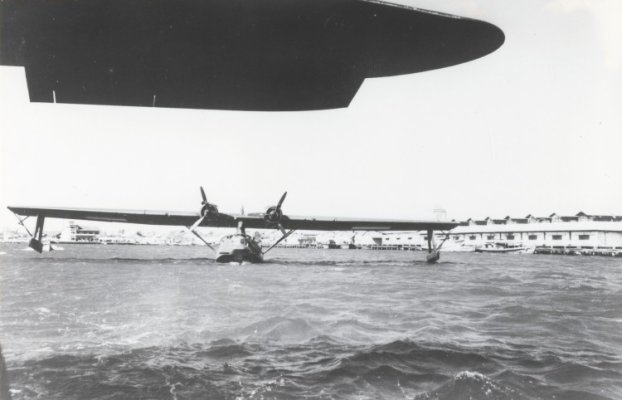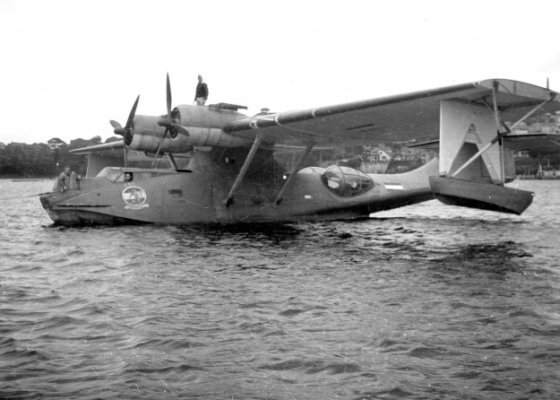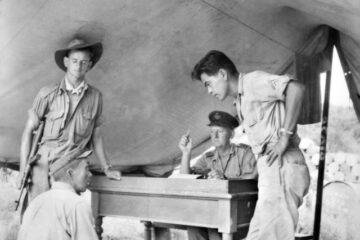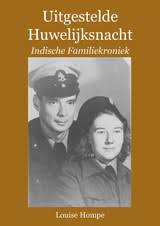The centre of gravity of the Airforce of the Royal Netherlands Navy ( Marine Luchtvaartdienst – MLD) was undisputed in the Netherlands East Indies (NEI). The aircraft carried out many reconnaissance flights for the fleet. Just before the outbreak of war, the MLD had 34 Dornier Do 24K flying boats and 25 Consolidated PBY Catalina flying boats, 8 Fokker C-XI W float planes for the cruisers and 10 obsolete Fokker T.IVa’s. The equipment was good, but insufficient in numbers to stop the invasion of a Japanese force in early 1942. The aircraft that were still available diverted or were destroyed by their own personnel.
The Battle of Netherlands East Indies
On December 13, 1941, the Do 24K X-22 was involved in the first air battle between Dutch and Japanese aircraft. One Japanese plane was shot down, and the other two retreated. On December 14, 1941, Japan launched an attack on Terempah, resulting in the first Japanese attack on the Dutch East Indies during World War II. On December 17, 1941, the Dornier Do 24K flying boat X-32 bombed the Japanese destroyer Shinonomé during the Japanese landing at Miri. The ship sank after two hits. In the same action, the X-34 was shot down, killing two crewmen. On December 23, 1941, Dornier flying boats bombed a Japanese cruiser and tanker off Davao in the Philippines. The X-27 and X-30 each shot down a Japanese fighter. On December 26, 1941, Japanese troops landed on Tarakan, destroying the oil installations in time. On the same day, the flying boats of GVT2 and X-26 of GVT5 were attacked and destroyed by Japanese aircraft in Tondano. On December 23, 1941, the Royal Navy achieved success at Kuching in Sarawak by attacking the Japanese invasion fleet. On January 29, 1942, the X-29 sank after an emergency landing and the commander died.
The drama of Broome
Broome had rapidly become a refuelling point for aircraft, located between the Dutch East Indies and the larger towns of Australia on the east coast. As a result, many Dutch refugees, from Java, among others, who had been chased away by the Japanese invasion, came to Broome. Due to its location, Broome grew into a significant Allied military base. During the fall of NEI it has been estimated that between 6,000 and 8,000 refugees passed through Broome, mainly landed by seaplanes.
In early March three squadrons of Dornier D0-24K and Consolidated PBY-5 Catalina aircraft arrived in Broome with 132 aircrew, 27 naval personnel as passengers and 89 civilians.
The Airforce of the MLD was badly hit during the Japanese bombing of Broome, the Do 24 X-1, X-3, X-20, X-23 and X-28 were destroyed, as well as the Consolidated PBY Catalina flying boats Y-59, Y-60, Y-67 and Y -70.Of them 5 Dutch Do 24K’s and 4 PNY-5’s were lost as were NEI airplanes, between 35 and 40 Dutch people were killed in the raid and some 60+ were badly injured.
Operation in Ceylon and Australia
The MLD crews present in Australia were ordered to continue flying to Ceylon (now Sri Lanka). Five Catalinas went and for the second time the MLD set a record by making the first non-stop Australia-Ceylon flight – approximately 5300 km – with one of the five flying boats. The four other aircraft made a stopover on Cocos Island.
In 1942, the 321 Dutch Squadron RAF was established in Trincomalee, Ceylon with personnel from the Royal Netherlands Navy. Initially, the squadron had a small number of aircraft and ground crew. However, reinforcements gradually arrived, including aircrew from Australia, ground personnel from the Princess Irene Brigade, and workers from local communities. Additionally, former employees of the Royal Netherlands East Indies Airlines (KNILM) joined the squadron, bringing technical expertise. Later, around eighty Indonesian sailors and stokers from the merchant navy, who had been interned in British India, volunteered to serve as ground crew under the condition that they would not engage in direct action against the Japanese. The squadron grew to approximately five hundred men, including Dutch aircrews, personnel from various backgrounds, and foreigners. The squadron was relocated from Koggala to RAF China Bay near Trincomalee, and its fleet consisted of Catalina amphibian aircraft.
During the initial period five Australia-Ceylon flights were followed by several in the reverse direction. The experience the Dutch gained with this was invaluable for the subsequent regular air services on this route operated by Qantas Empire Airways.
On one of these flights Admiral Helfrich was transported to Australia for a visit and inspection of his naval, land and air forces in that country. On the way back there was a deviation from the normal route via Exmouth Gulf for certain reasons. The pilot decided to fly from Perth to Ceylon – a brave job considering that the distance was about 3200 nautical miles. Again by No. 321 (Dutch) Squadron set a record.
The Do-24Ks that after their arrival in Australia from the NEI were not able to cover this stretch to Ceylon because their range was too small, were sold to the RAAF, except the X-24, which was used for the NEFIS and NICA (Netherlands Forces Intelligence Service and Netherlands Indies Civil Administration) flights between Australia and Netherlands New Guinea, Tanimbar, Kai and Aroe Islands.
In late 1943 the Netherlands Government-in-Exile in London purchased two new Catalinas to replace the obsolete Do-24Ks in Australia. Both aircraft, the Y-86 and Y-87, were flown from the United States to Australia by Dutch crews. The remaining flying hours were spent on training and training flights, on transport and research flights, as well as on transfers of personnel and equipment.
The MLD Detachment Australia kept growing and by 1945 they were based at the Qantas Empire Airways facility at Rose Bay, Sydney.
The pictures below are from the archives of the Royal Netherlands Navy.



Epilogue
In three and a half years (March 1942-August 1945) the 321 Dutch Squadron RAF, with an average strength of 22 aircraft, had flown 31,700 hours, of which 22,500 operational. Fifteen aircraft were on average available for war flights and with this small percentage the Squadron succeeded in convoying no less than six thousand Allied ships without the slightest loss. It is therefore that this Squadron has been one of the best Allied squadrons in the Second World War, as evidenced by various telegrams from high-ranking Allied personalities.
See also:


